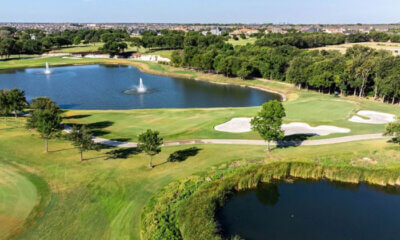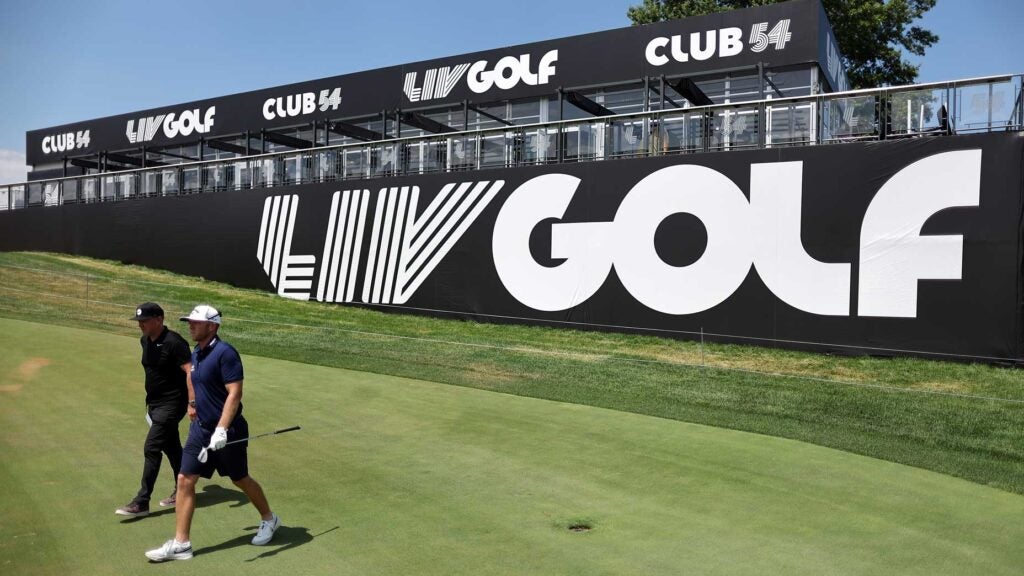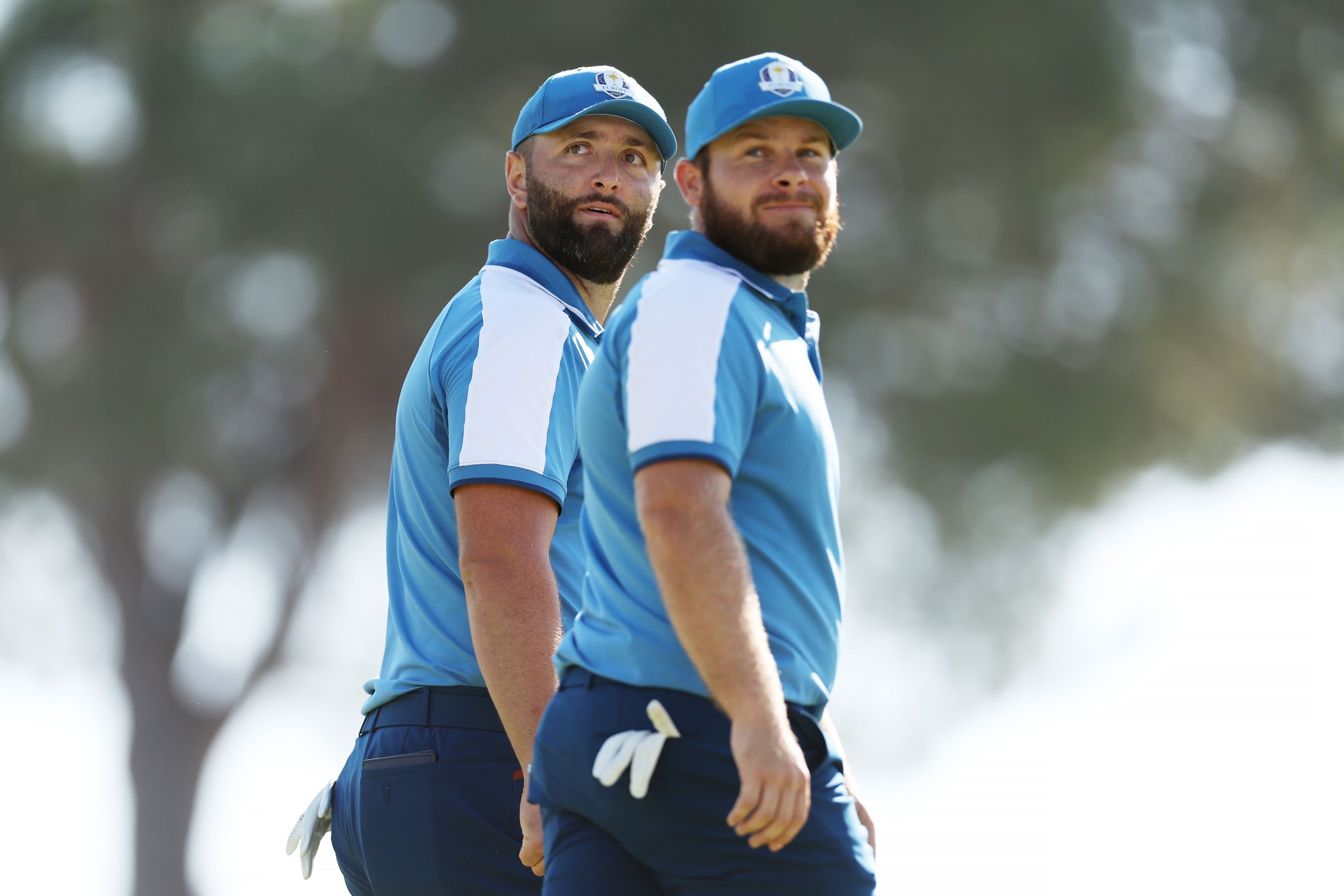Golf Instruction
Improve Your Game Today Without Lessons

Lessons are expensive. They are time consuming. And then there is the intolerable wait for the changes you make to “take hold.”
You have to listen to the pro tell you you’re pronating, or suppinating, or deal with the haunting image of your golf swing on video. You have to listen to your friends on the practice range telling you how you are or are not doing what you have told them your pro is making you do.
Well, my friends, there are things you can do to improve your game today, right now.
They are cheap. They are fast. And they are easy, just like you wish lessons would be.
Play the Right Tees
Here’s the thing: You don’t hit the ball as far as you think you do. No, you don’t. No, you don’t!
The average distance off the tee for amateur men is 230 yards. By definition, that means half of us do not hit the ball that far. That means, if you’re playing a golf course where the average length of the par-4s is 400, you have an average of 170 or more yards to the hole on the par-4s.
For most of us, that is a 3 or 4-iron for our approach.
If you move up to next forward tees, taking some 20 yards off each hole, all of the sudden you are hitting 5 or 6-iron into the green.
Hitting two or even three clubs less into the hole is a quick and easy way to reduce your score. Don’t believe me? Look at what the pros do to any hole they have a wedge or short iron in their hands.
Plus, you increase your chances of reaching the par-5s in two strokes, which is fun for everyone.
Whatever tees you play now, set aside your ego and move up to the next tee.
You will see a dramatic improvement to your scores right away.
Play the Right Ball
I have a buddy who loves to find Pro V1 and Pro V1x balls. (He would never buy them, of course, because they are much too expensive), but he loves to play them. (He also likes the fact that he finds them so they are, therefore, free. I’m not going to say he’s cheap, but…yeah, he’s kind of cheap.)
My friend doesn’t like to face the fact that he simply does not have the game to play these balls.
Here’s the thing: If you lack the skill or ability to compress a high performance golf ball like the ones I just mentioned, you will lose distance. Plus, if you lack the skill and ability to control the spin these balls are designed to produce, you will spend much more time in the rough and woods looking for your ball.
Once again, this requires that you set aside your ego and honestly evaluate your game. If you’re not consistently scoring in the 70s, you shouldn’t be playing an expensive, high-performance golf ball.
As a general rule, the higher your handicap, the less you should pay for your golf balls. And if you find a ball that doesn’t suit your game, go ahead and play it. After all, it was free.
Play the Right Clubs
Much like the golf ball you play, the clubs you play can make a difference in your game.
Far too often, I see guys on the course playing with clubs they dug out of their father’s garage from 25 years ago. Or they found a set of muscle-back blades for a great price on the used club rack at Edwin Watts.
The problem is the clubs don’t suit their game. Clubs from 25 years ago are hurting your game because they lack the advances in technology that have been made in the last quarter century.
The forged blades require a player of a certain skill level to play them well. As a high-handicap player, and lacking the ability to hit the ball on the center of the club-face, you will lose distance and accuracy using these clubs.
I’m not saying you have to spend $1000 on a brand new set every year, but if you are not availing yourself to technology that is newer than the last time the cicadas were filling the summer air with their incessant buzzing, you are leaving strokes on the golf course.
And, if you are swinging clubs that are ill-fitted for you, you are hurting yourself.
Practice Your Short Game
Fifty percent of the game is played on the greens. Two-thirds of the game is played from 150 yards and closer to the green. What do these numbers mean?
That mean if you are not practicing short irons, pitching, chipping, and putting at least twice as much as the time you spend hitting medium and long irons, hybrids, woods, and your driver, you are wasting your precious practice time.
When you get your bucket of balls for practice, at least 60 of those 90 balls should be hit with your wedges. The other 30 should be hit with all your other clubs.
If you spend an hour hitting balls on the range, you should spend an hour on the putting green, too.
I know putting is nowhere near as much fun as pounding drivers down the range, but if you want to improve, you have to make the most of your limited practice time.
Remember, good putting will cover up a lot of other crap, but if you can’t make the putts, it really doesn’t matter how well you can drive the ball.
You can hit an average tee shot, a below average approach, a decent chip and still make par. If, however, you drive a ball 300 yards down the middle of the fairway, but miss the green from 90 yards, chili-dip your chip shot, and miss your par putt, that great drive goes to waste.
There’s a reason the adage reads, “Drive for show, putt for dough.”
Cover Image via Flickr
-

 News1 week ago
News1 week agoPGA Tour Loyalty Payouts Revealed: Tiger Woods Stands to Make The Most
-

 LIV Golf Tour2 days ago
LIV Golf Tour2 days agoWATCH: Kevin Na Throws a Temper Tantrum at LIV Golf Adelaide
-

 LIV Golf Tour2 days ago
LIV Golf Tour2 days agoLIV Golf Sets New Record With Adelaide Event
-

 Fantasy Golf Predictions2 days ago
Fantasy Golf Predictions2 days agoFantasy Golf Picks, Odds, and Predictions – THE CJ CUP Byron Nelson
-

 Fantasy Golf Predictions1 week ago
Fantasy Golf Predictions1 week agoFantasy Golf Picks, Odds, and Predictions – 2024 Zurich Classic
-

 News1 week ago
News1 week agoPGA Tour Players Who Rejected LIV Golf Offers Set to Find Out How Much Their Loyalty is Worth
-

 News6 days ago
News6 days agoDouble Trouble: We May See Two Woods at 124th U.S. Open
-

 LIV Golf Tour1 week ago
LIV Golf Tour1 week agoGreg Norman Reveals that LIV is Considering Moving to a 72-Hole Format











